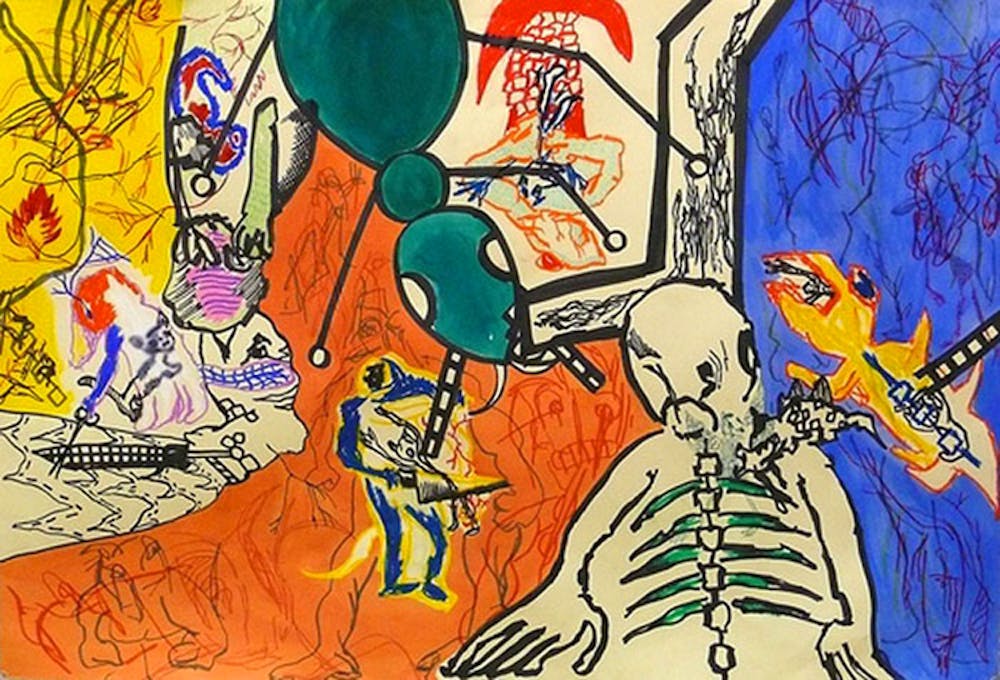In the pandemic's 30th year, HIV/AIDS still affects over 30,000 Philadelphians. Take action and mourn for those who have suffered by joining Philly in the Day With(out) Art.
On December 1st 1989, Visual AIDS — the only contemporary arts organization fully committed to AIDS prevention and awareness — led 800 artists and AIDS groups in a bold response to the horrific holes left by HIV/AIDS in the American art world. In the first Day Without Art, many museums were shut down, their staff sent to volunteer at AIDS services, while others sponsored extraordinary performances and exhibitions of work centered on the pandemic. Often the most moving were exhibits whose work was blatantly absent, covered by black sheets or unhinged and taken from the wall. Now, 8,000 national and international museums, galleries, libraries, high schools and colleges participate in the Day With(out) Art, each with a unique response to a devastating piece of recent history that is not yet close to becoming a memory.
THIS YEAR IN PHILADELPHIA: Institute of Contemporary Art 118 S. 36th St. 12/1, 11 a.m.–6 p.m. icaphila.org Every hour on the hour, the ICA will play Untitled, a film of archival and pop footage of the fervent activism sparked by the outbreak of AIDS. Stop by today between 1–3 p.m. to participate in a Ribbon Bee where members of the community can read related materials out loud, listen and help assemble hundreds of red ribbons with pins designed by four contemporary artists.
Temple Gallery 2001 N. 13th St. Now–12/16, 11 a.m.–6 p.m. temple.edu/tyler/exhibitions Temple Gallery has amassed a selection of protest ephemera from a range of Philadelphia groups. These placards, banners, signs and stickers chart Philadelphia’s history with the virus through some of the major issues such as opposition to Big Pharma, housing for those with HIV and AIDS, and prisoners with AIDS.
Asian Arts Initiative 1219 Vine St. 12/2–1/27, 10 a.m.–6 p.m. Opening reception Friday 12/2 at 6 p.m. asianartsinitiative.org The Asian Arts Intiative’s exhibit “Witness,” curated by David Acosta, calls on 30 artists for a response to the social, cultural and political impact of 30 years of HIV/AIDS. Artists are broken into two groups: half selected due to previous work addressing the subject matter and half selected in an open call for artists under 30 years old. Assorted races, ages, genders and sexual orientations unite in a multi–media installation that focuses on this moment in time.
The William Way Community Center 1315 Spruce St. Now–12/15, 11 a.m.–7 p.m. waygay.org In an exhibit titled “1981–Until It’s Over,” William Way encapsulates the political history of AIDS and the ways Philadelphia emerged as a national leader in treatment and support. In a chronological string of photographs, newspaper clippings and quotes, you can trace the incredible and ever–present dent AIDS has left in our city — taking pride in our identity as one of the first cities to provide free HIV testing and remembering the disease's prevalence now more than ever.
********************************
1989: The Met replaced Picasso’s 1906 portrait of Gertrude Stein with a black–and–white placard about AIDS.
1993: The Guggenheim draped a giant black cloth from the roof down the length of the building.
2003: The Andy Warhol Museum featured over 1,825 oversized AZT pills, the annual dose of AZT taken during the ‘80s.







